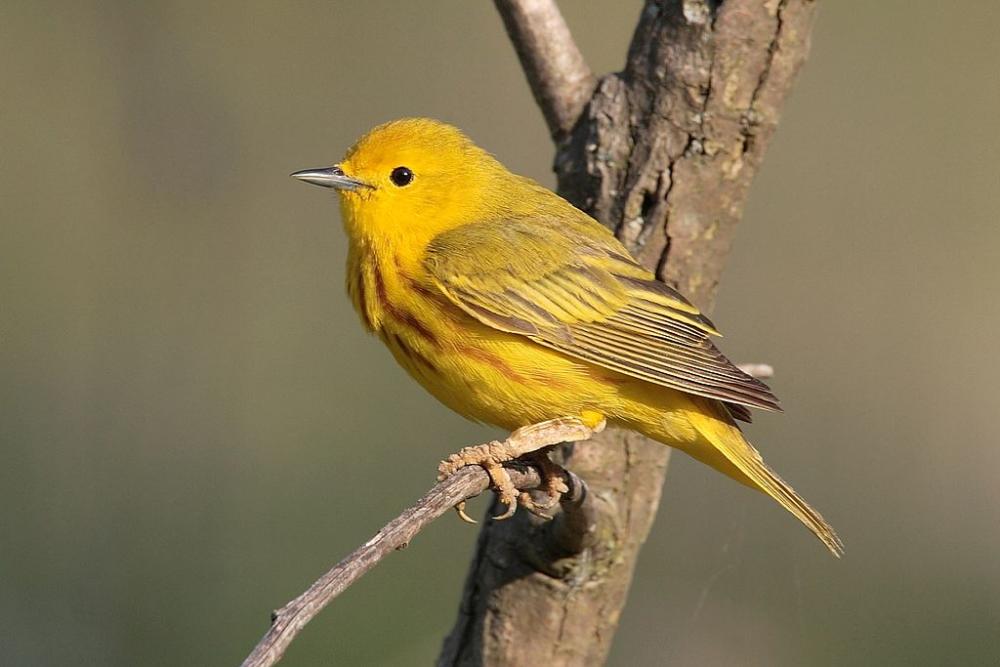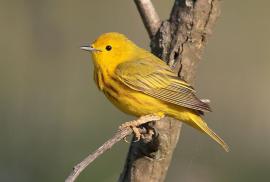Guide to Boreal Birds
Overview
This is one of the most widespread of our warblers, showing great geographical variation. In the tropical parts of its breeding range this bird nests mainly in mangrove swamps, and there it may have a chestnut head or crown patch. In temperate North America the Yellow Warbler is one of the principal victims of the cowbird, which lays its eggs in the nests of other birds. A cowbird lays only one egg per foster nest, but she may lay eggs in four or five nests in a short time, thus jeopardizing many broods. If the female Yellow Warbler discovers a cowbird parasitizing her nest, she quickly covers the alien egg with a new foundation and lays another clutch. Occasionally a nest is found with up to six layers, each containing one cowbird egg.
Description
4 1/2-5" (11-13 cm). Bright yellow with a light olive green tinge on back. Male has fine rusty streaks on breast. The only largely yellow warbler with yellow spots in the tail (not white).
Voice
Song a bright, musical sweet-sweet-sweet, sweeter-than-sweet. Call a sharp chip.
Nesting
4 or 5 pale blue eggs, thickly spotted with brown, in a well-made cup of bark, plant fibers, and down, placed in an upright fork in a small sapling.
Habitat
Moist thickets, especially along streams and in swampy areas; gardens.
Range/Migration
It is difficult to characterize the migration of this widespread species, because of its extreme geographic variability (there are seven migratory subspecies in North America). The first Yellow Warblers to arrive in the United States are those that reach southern California in mid-March. These birds, representing two subspecies, pass up the Pacific coast and reach southern Alaska by mid-May. The other five subspecies arrive in the United States in early April. This wave of birds passes through the southern states along a broad front stretching from Arizona to Florida. Their movement is rapid; some of these birds will reach the Great Lakes region before the end of April, and others may arrive in interior Alaska by mid-May.
Breeds from Alaska east across Canada to Newfoundland and south to southern California, northern Oklahoma, and northern Georgia; local in southern Florida. Winters in tropics.



